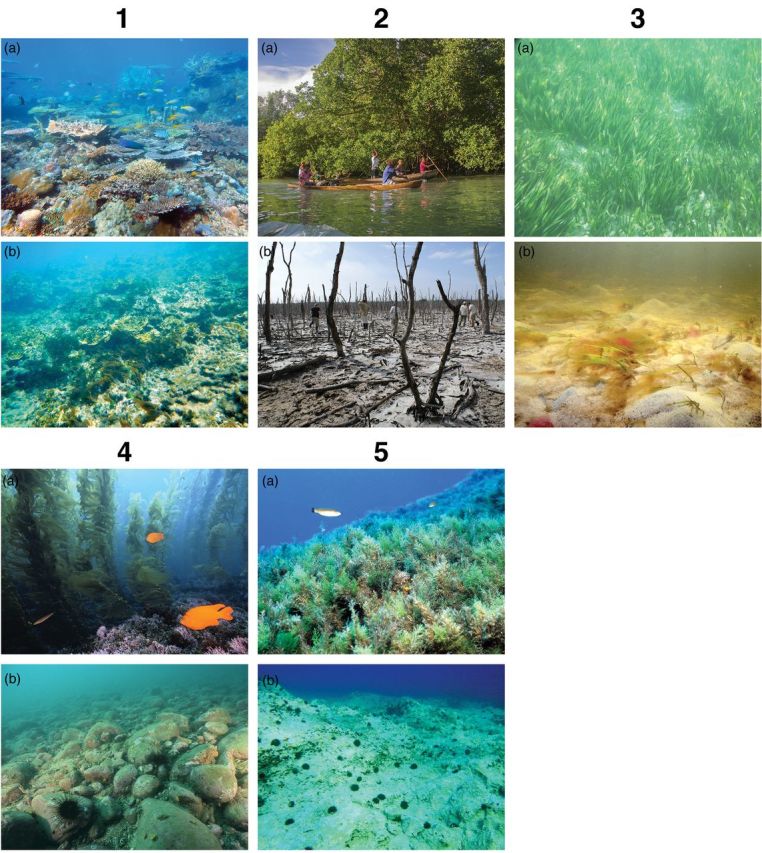Figure 1.

Examples of healthy (rich ecosystem services; e.g., food supply, nursery grounds, coastal protection) versus degraded (poor ecosystem services) marine ecosystem sites. (1) Tropical coral reefs: (a) a high-structural-complexity reef, dominated by reef-building corals (Kota Kinabalu, Malaysia), (b) a degraded reef (Ulithi, Yap, Federated States of Micronesia); (2) Mangrove forests: (a) a fully developed forest (Mangal; Solomon Islands), (b) a degraded mangrove site (Rookery Bay, Florida); (3) Seagrass meadows: (a) a Posidonia australis meadow (King George Sound, Australia), (b) a stressed Zostera muelleri meadow (Tasmania, Australia); (4) Kelp forests: (a) a highly productive giant kelp forest (California), (b) a deforested kelp reef with low productivity and diversity (California); (5) Canopy-forming algal forests: (a) a Cystoseira balearica forest (Scandola, Corsica), (b) urchin barrens (Porto Cesareo, Italy). Photographs: 1a C. Storlazzi; 1b A. Abelson; 2a E. Brokovich, 2b C.J. Sapp; 3a G. Kendrick, 3b G. Edgar; 4a,b R. McPeak; 5a E. Ballesteros, 5b P Guidetti.
